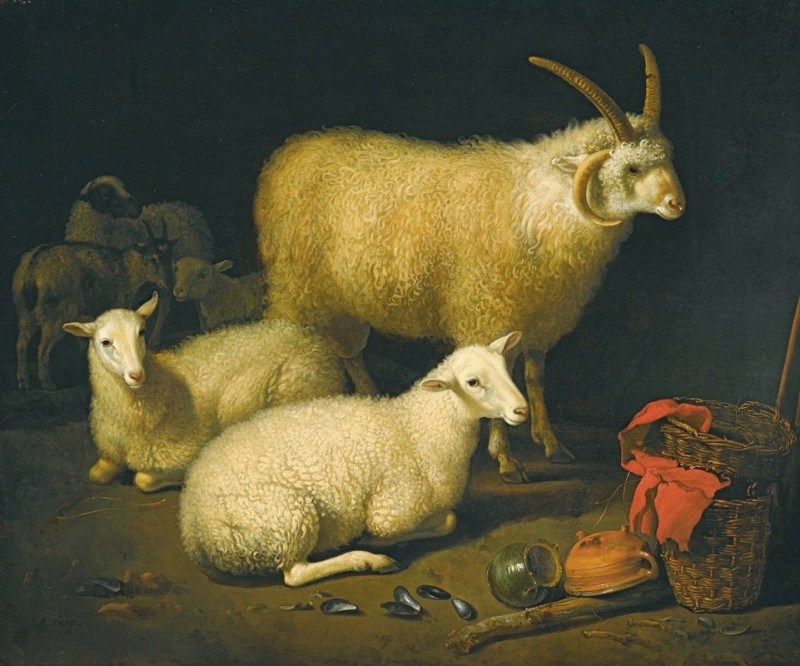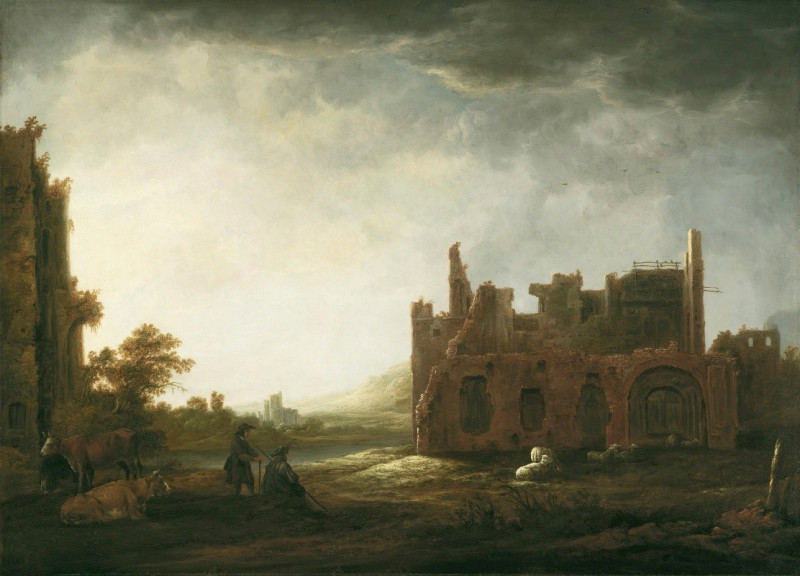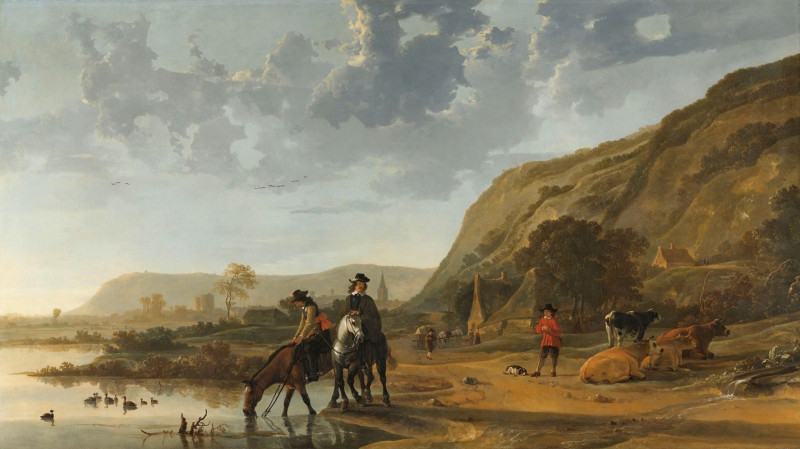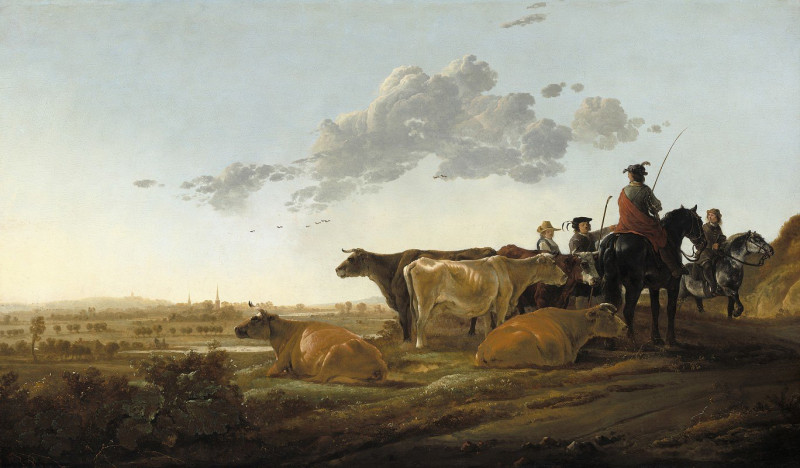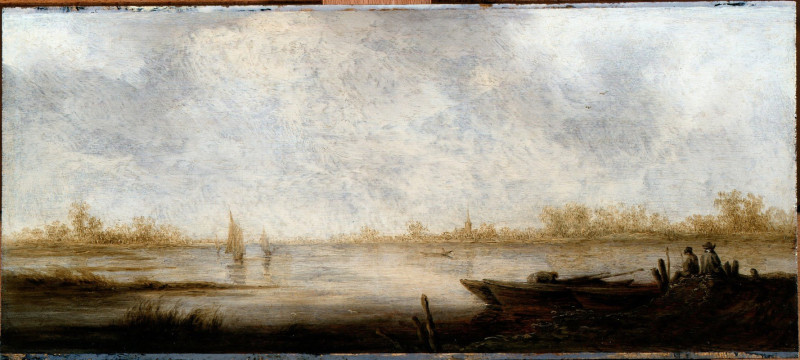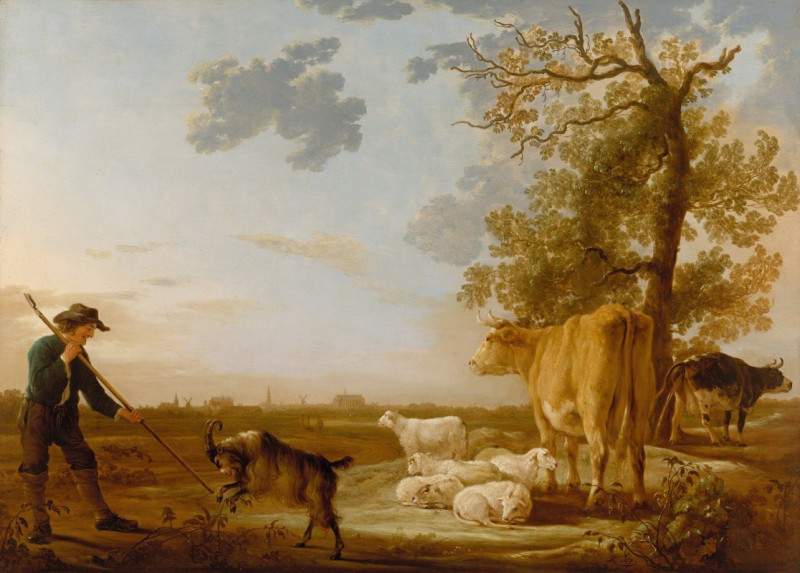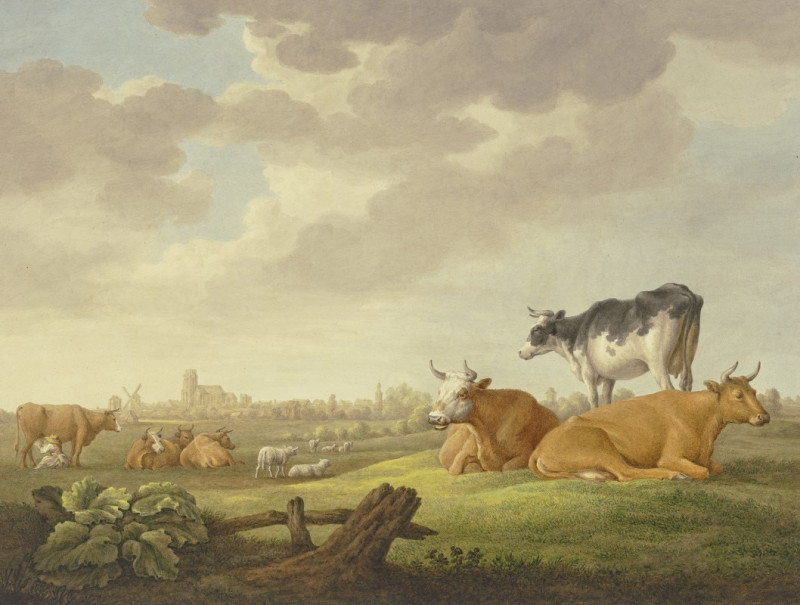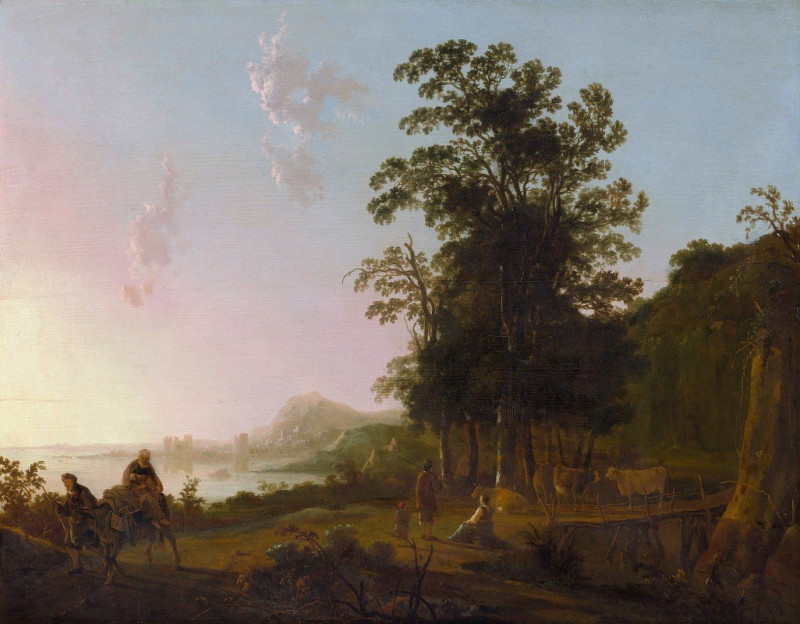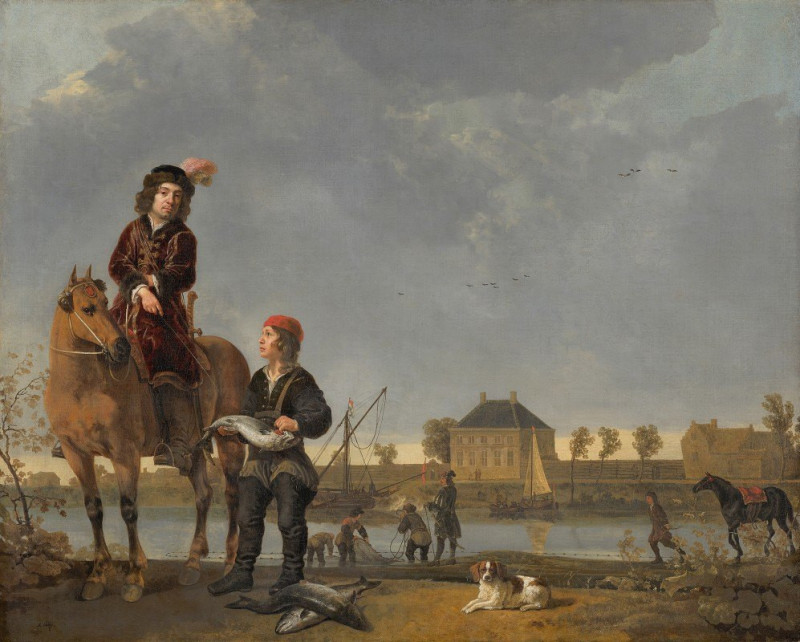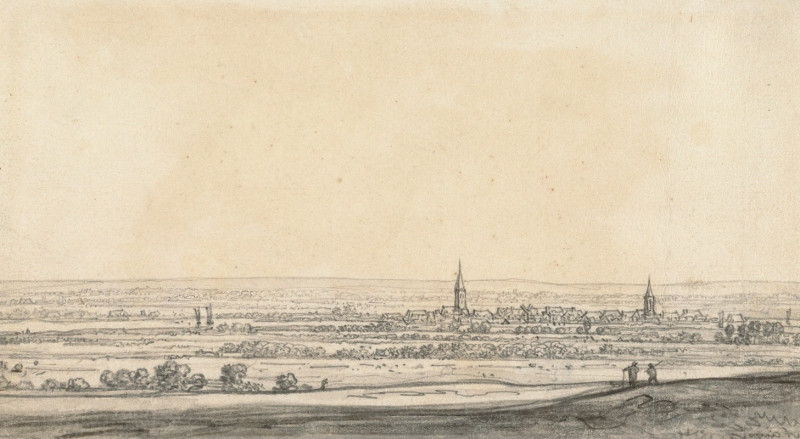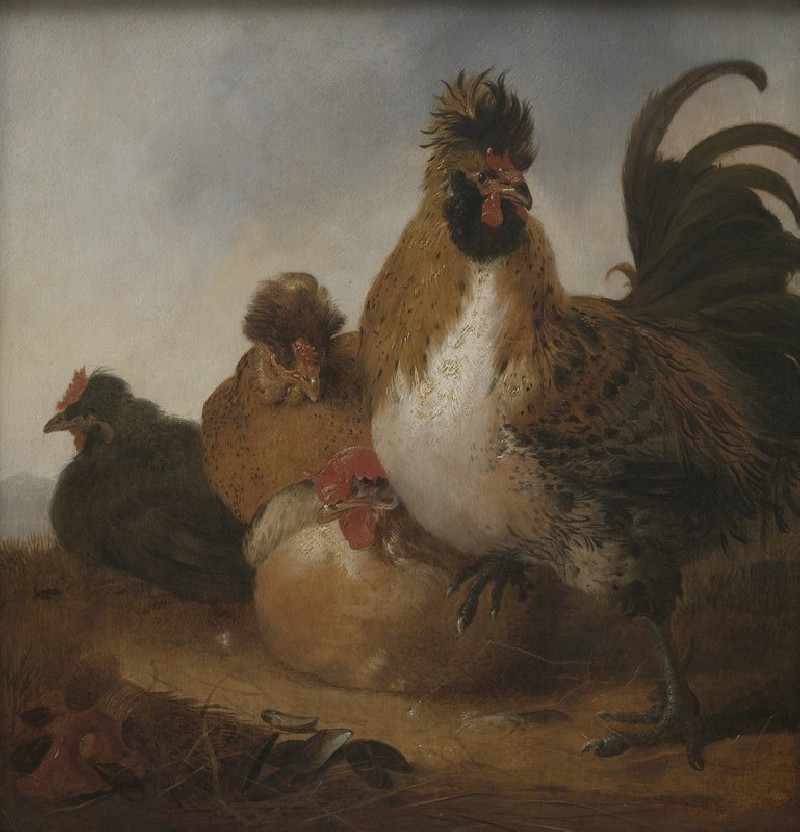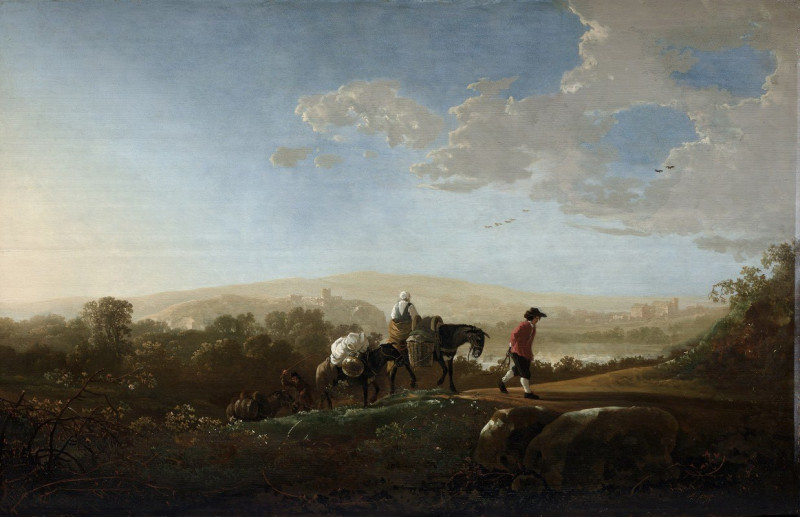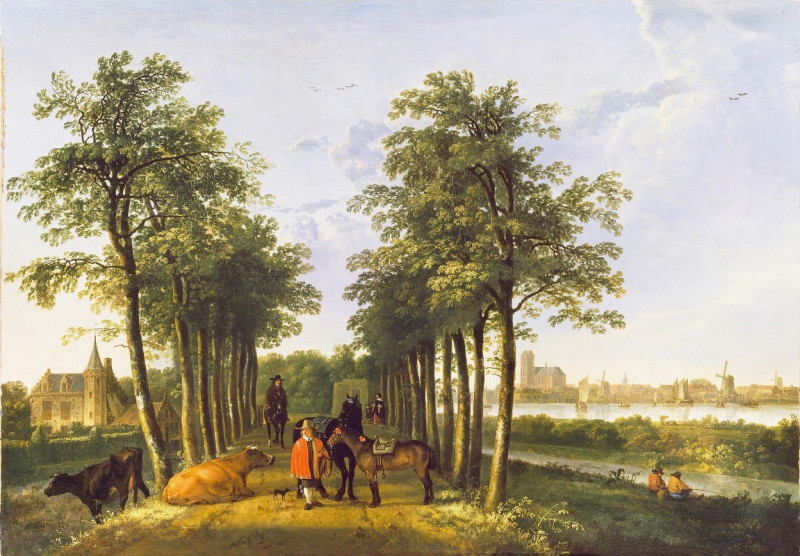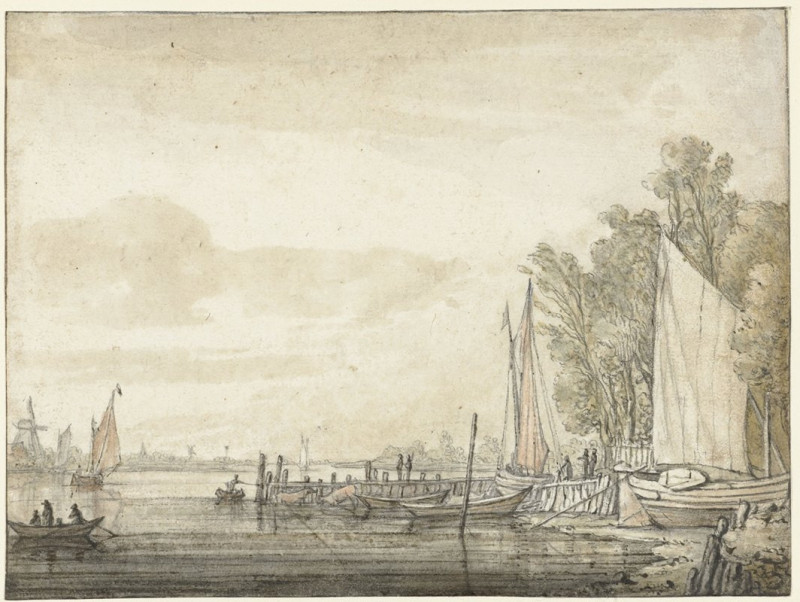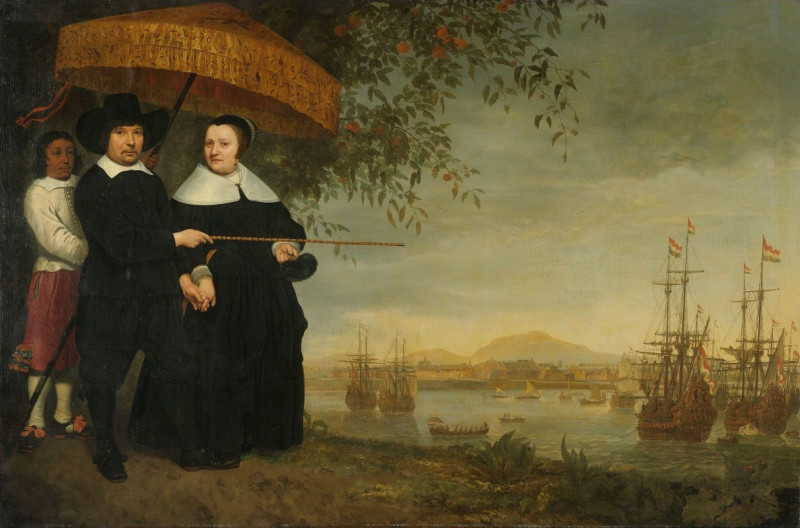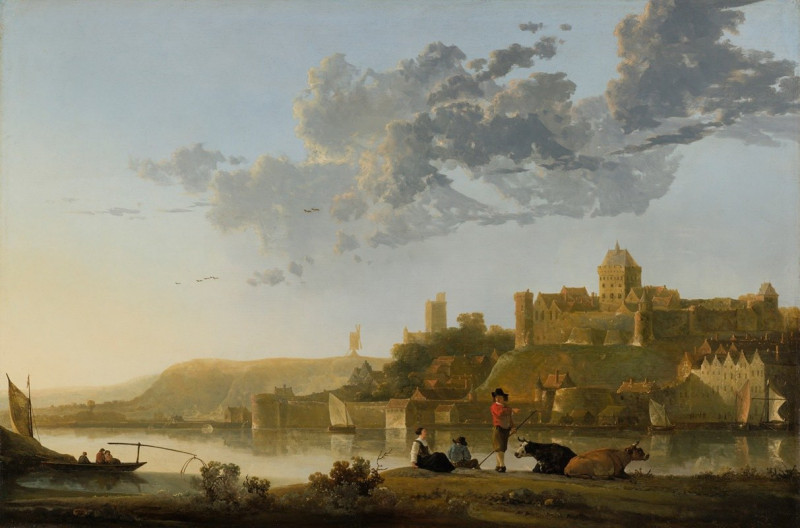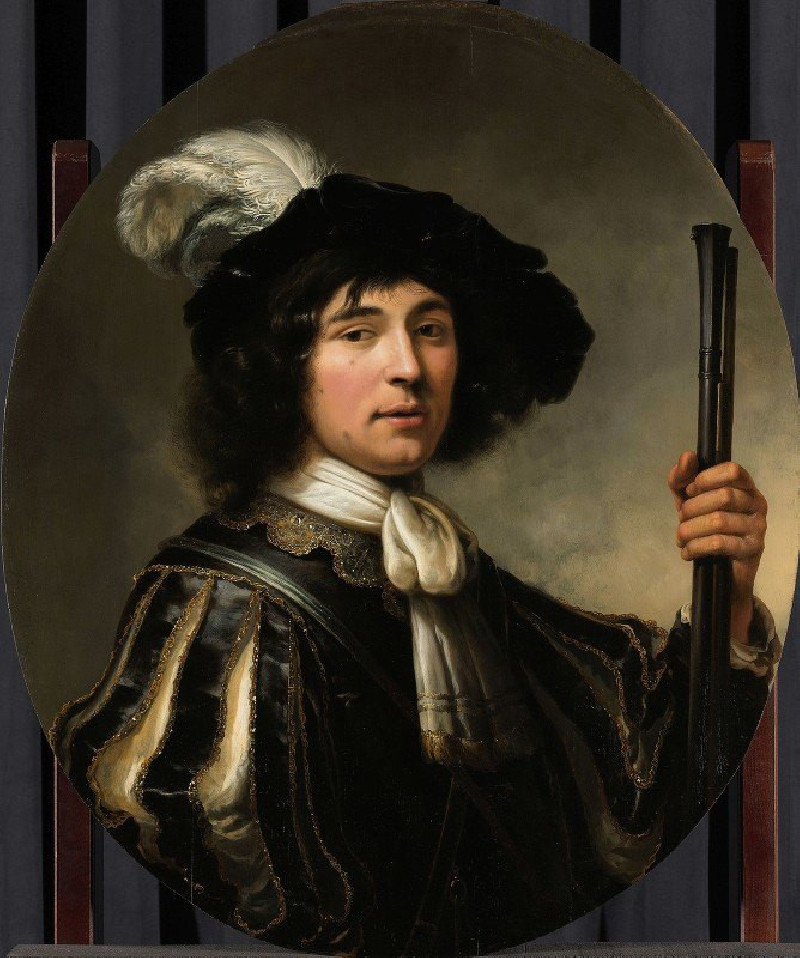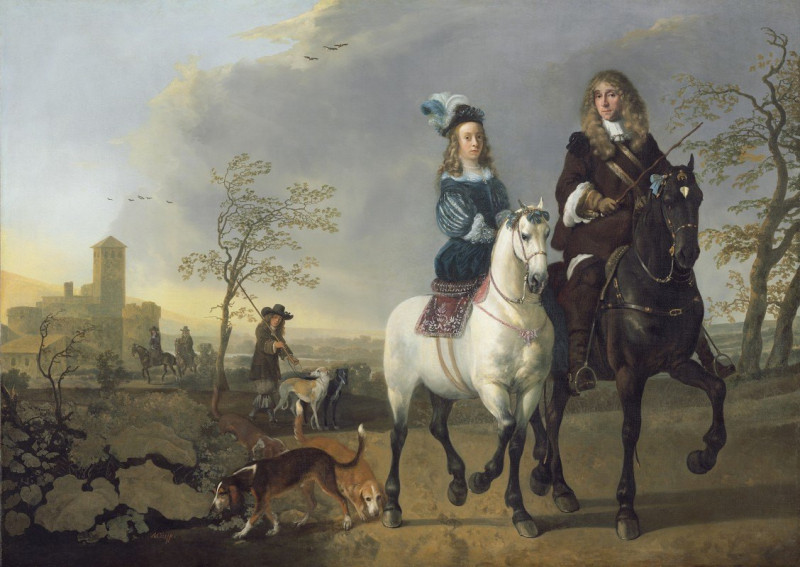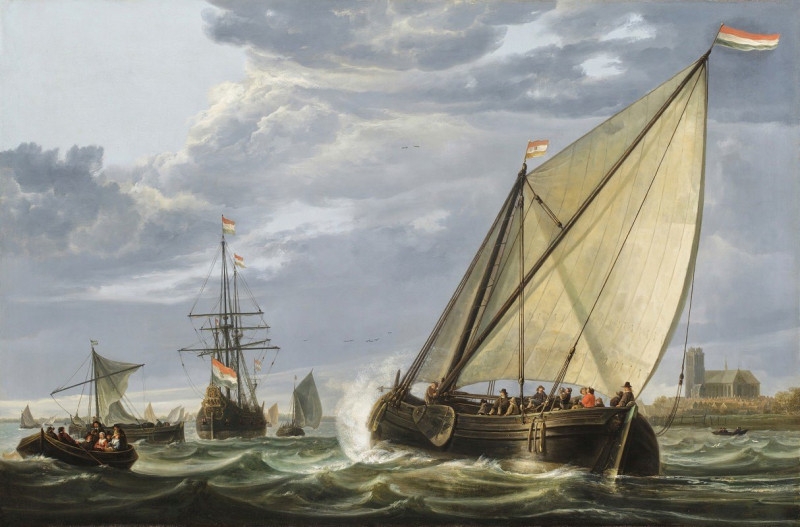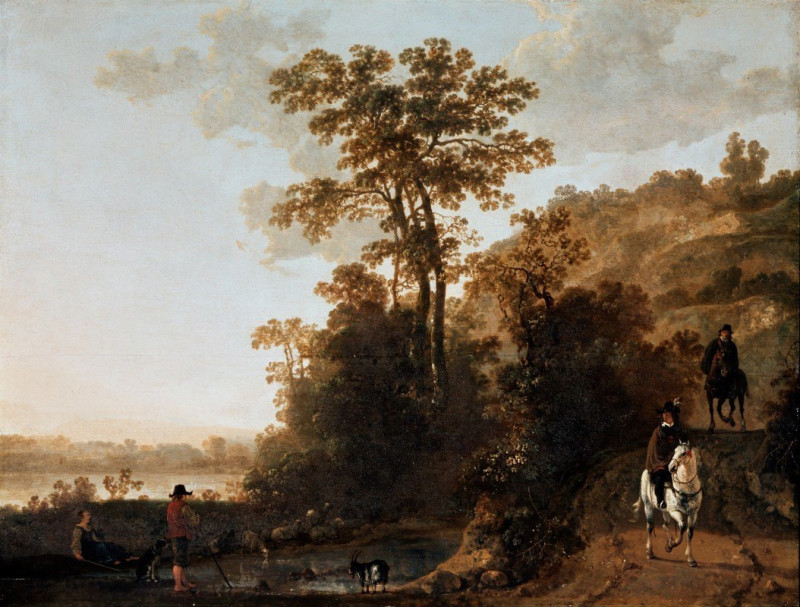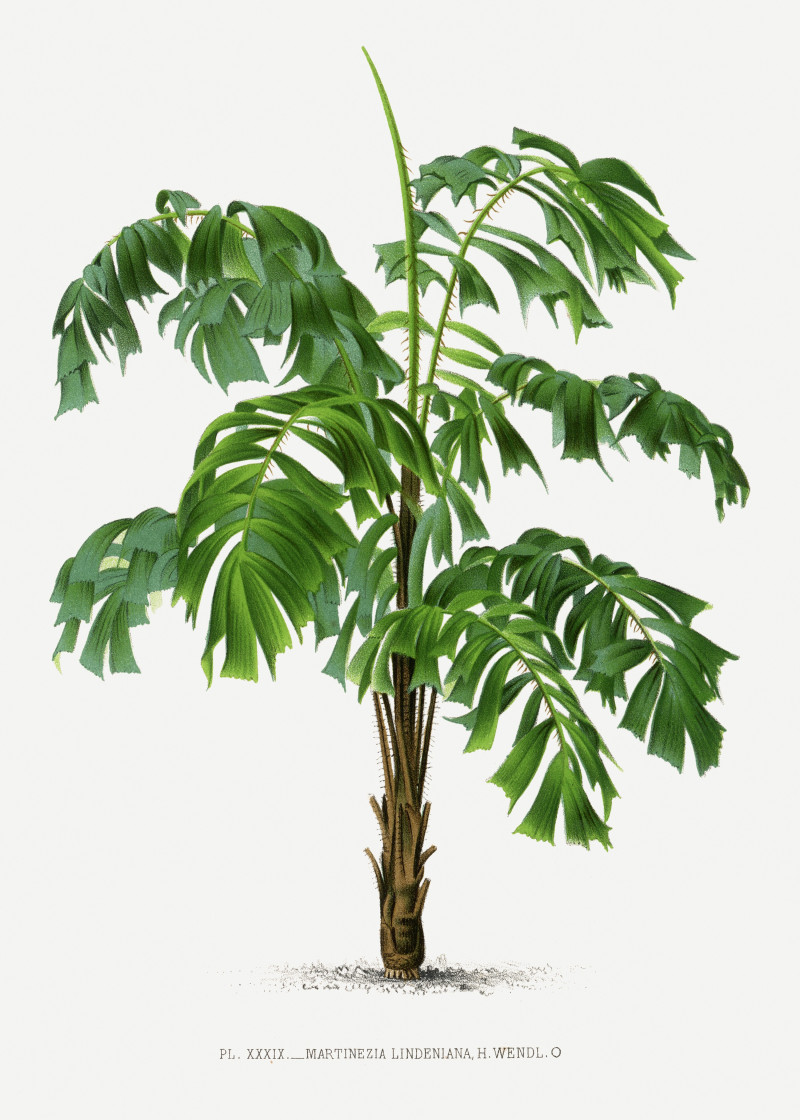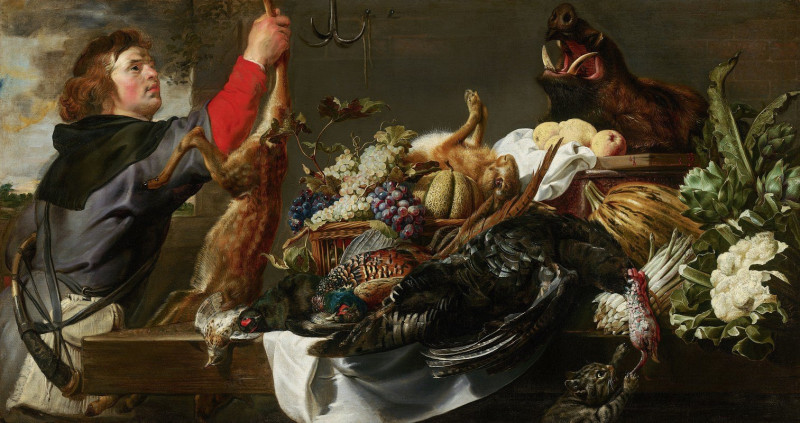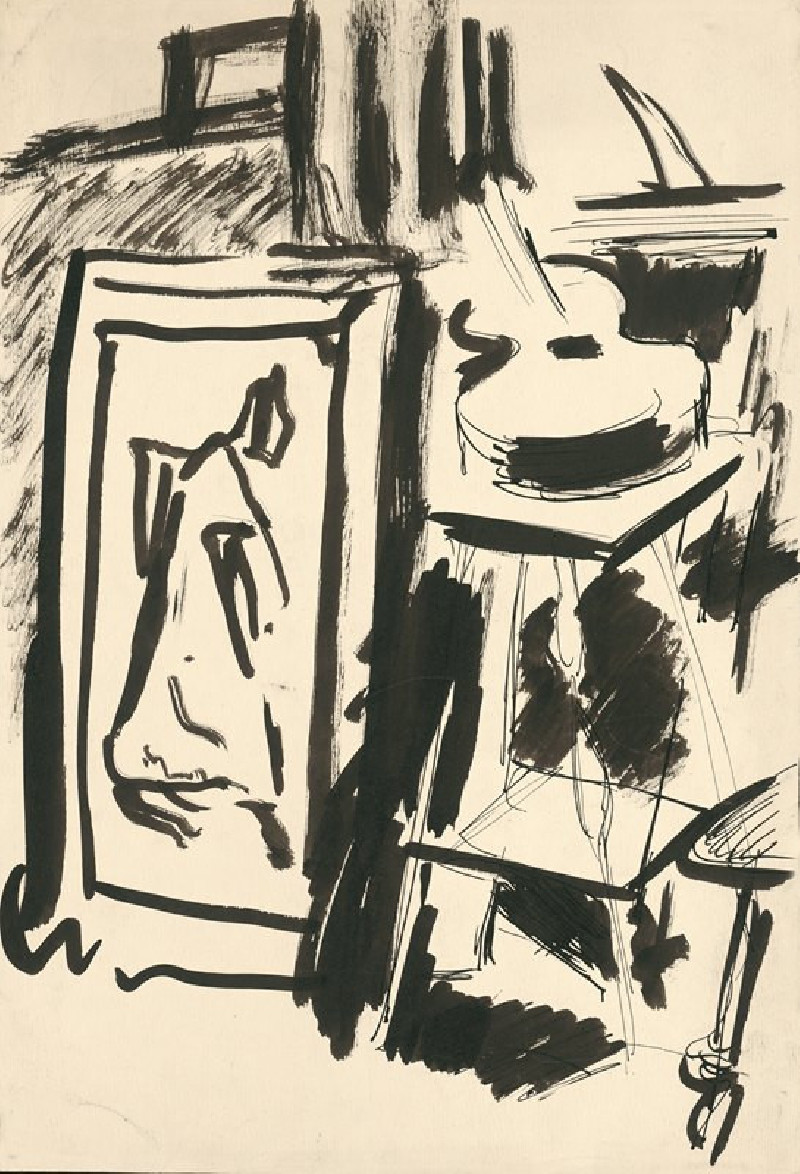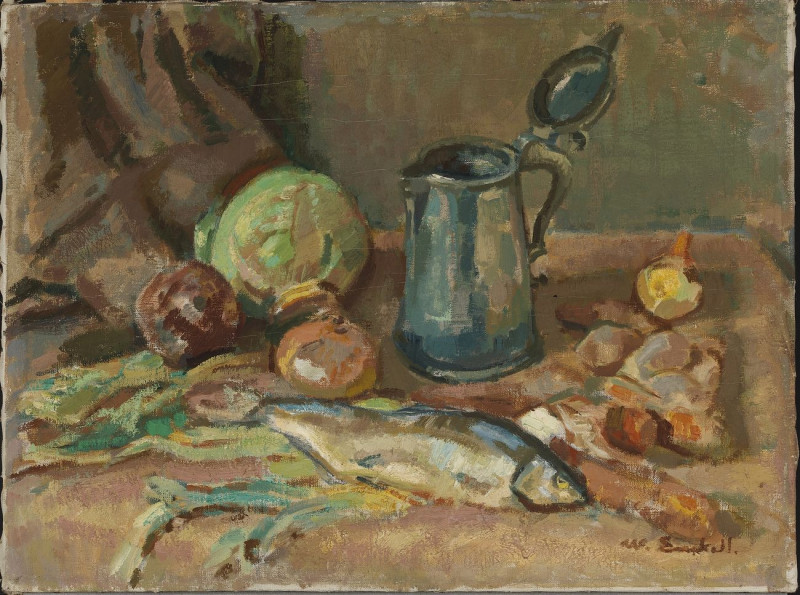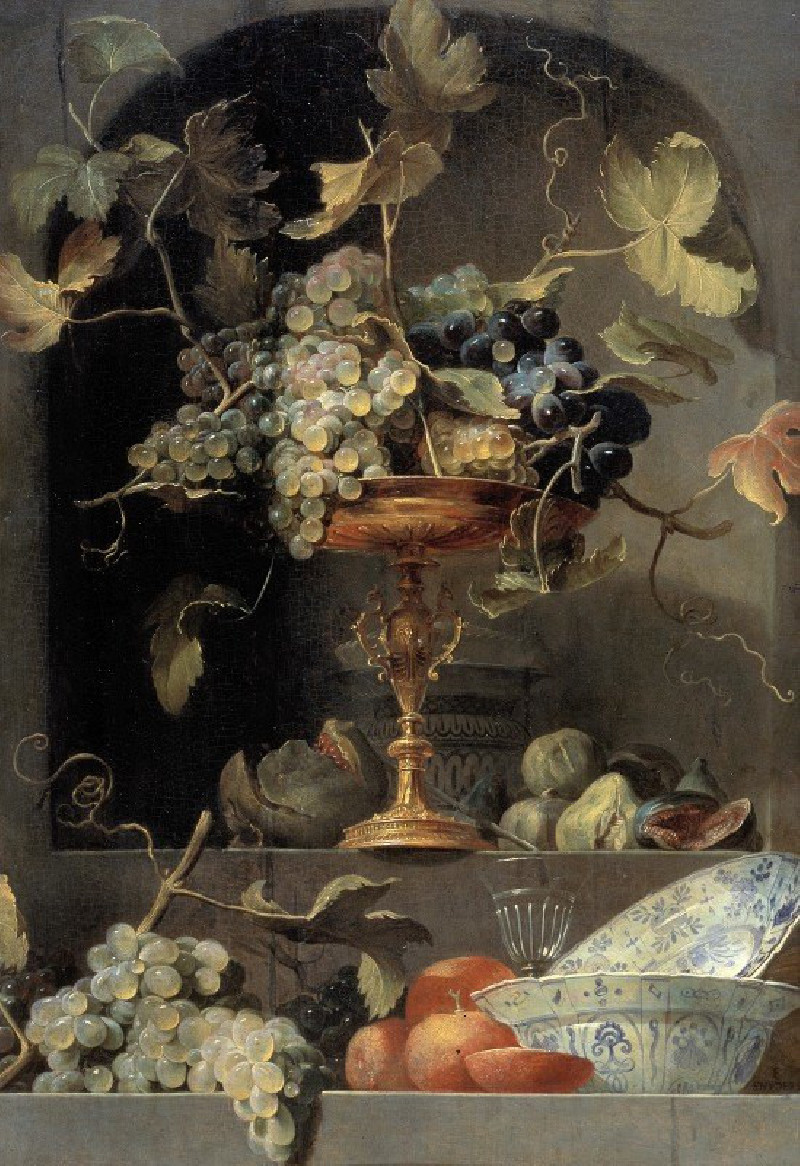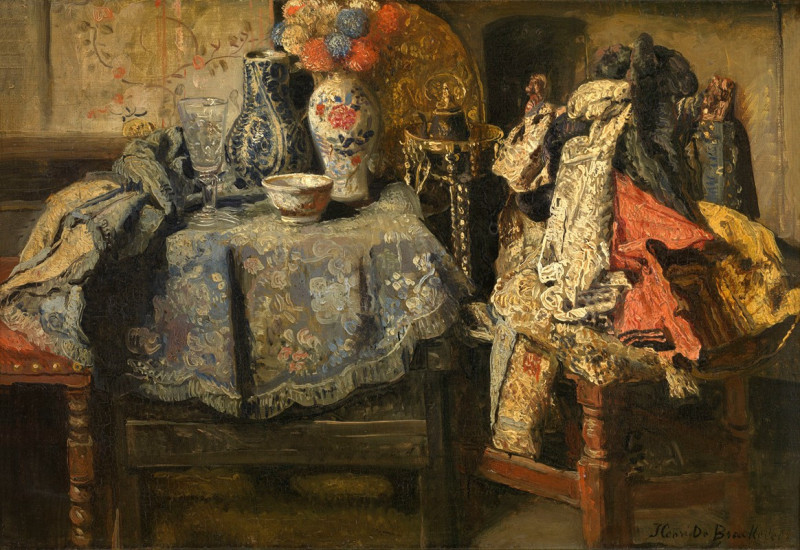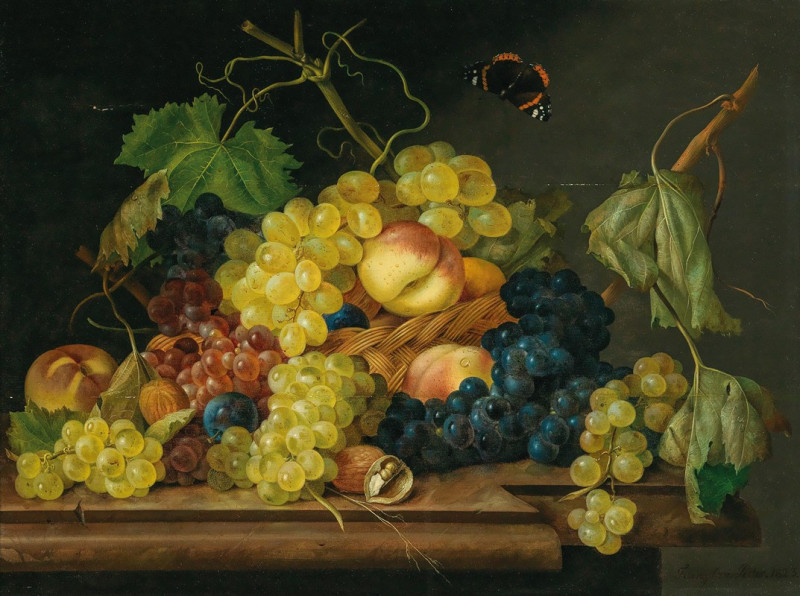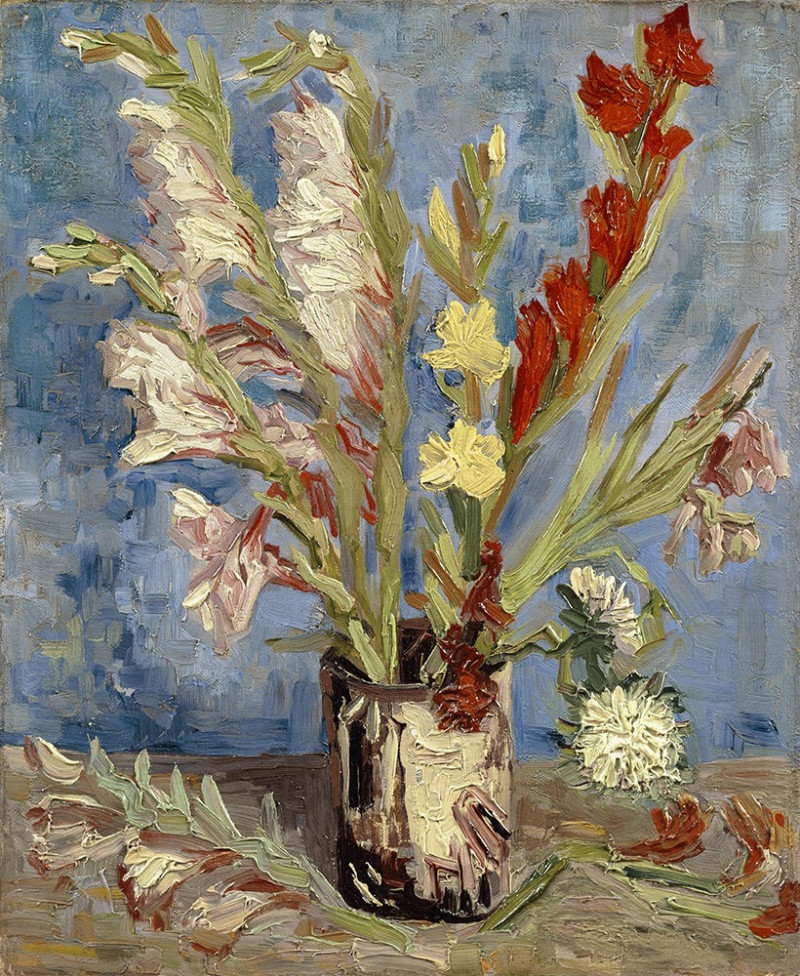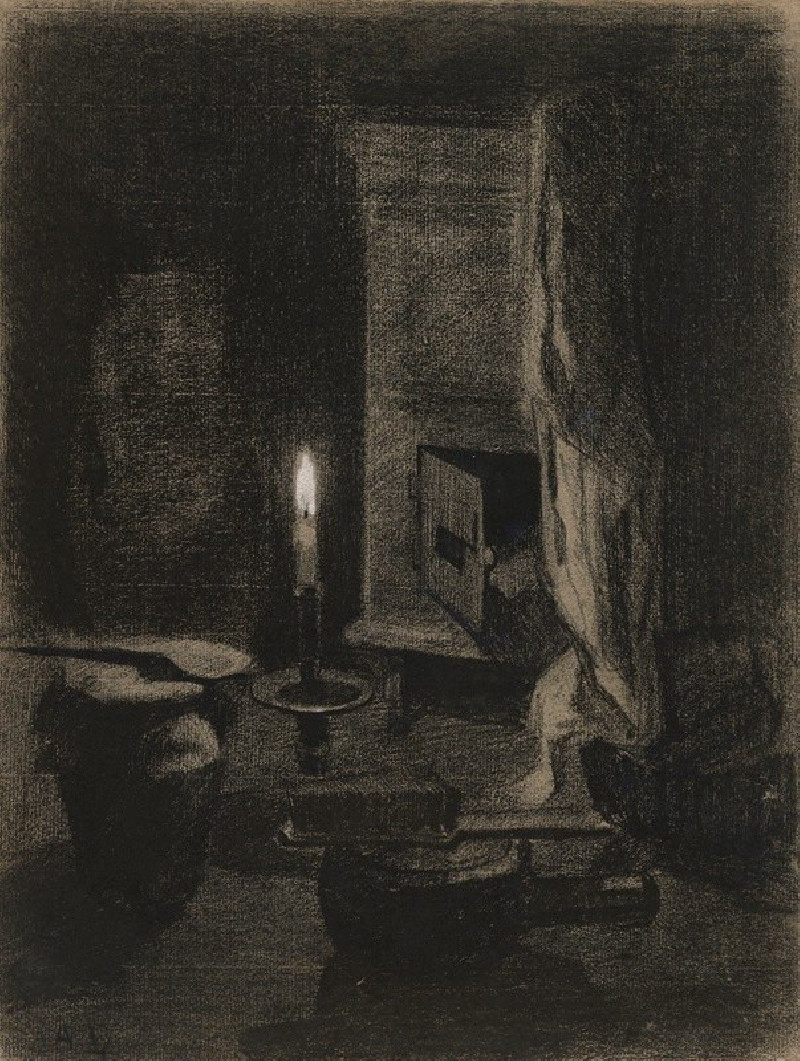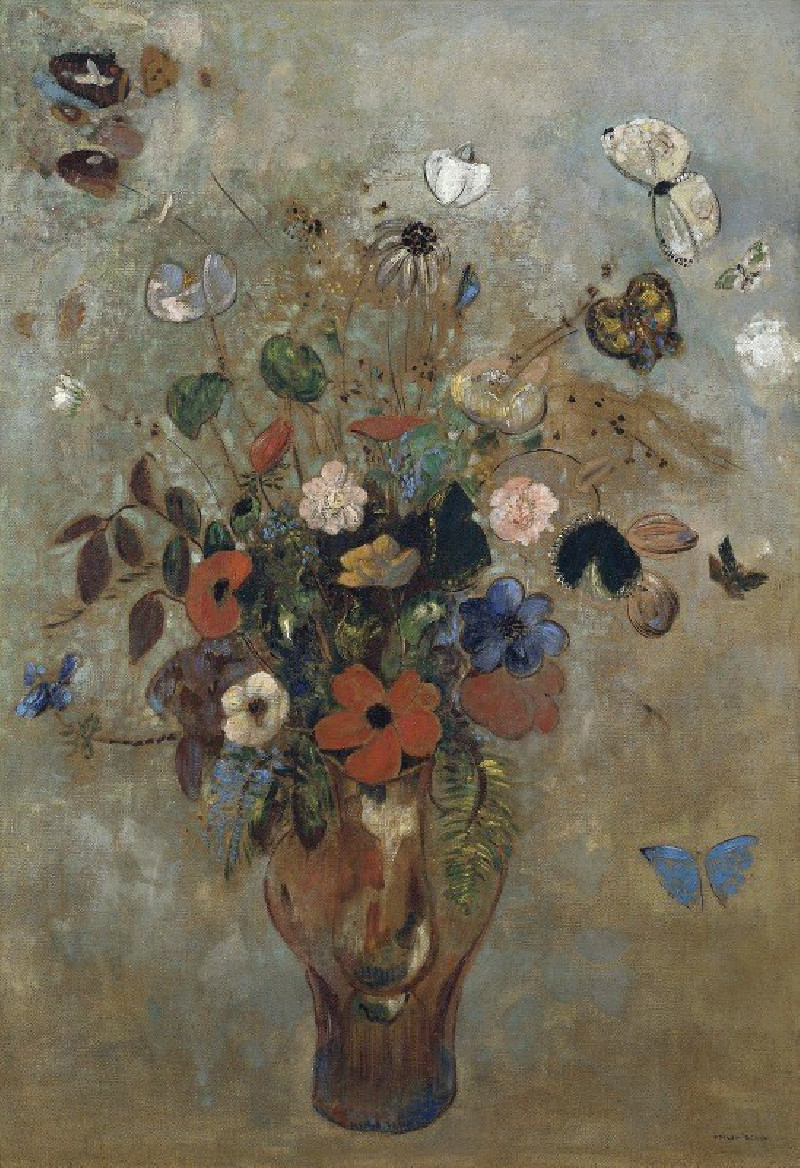A barn interior with a four-horned ram and four ewes, and a goat, with a still life of a basket and upturned pots to the right
Technique: Giclée quality print
Recommended by our customers
More about this artwork
Welcome to our gallery's exploration of Aelbert Cuyp's remarkable work, "A Barn Interior with a Four-Horned Ram and Four Ewes, and a Goat, with a still life of a basket and upturned pots to the right". This 17th-century painting invites viewers into a tranquil yet captivating barn scene that highlights Cuyp's mastery in rendering light, texture, and animal anatomy with extraordinary realism.The composition prominently features a four-horned ram, its horns twisting in unique arcs that catch the eye amidst the softer outlines of the barn's other inhabitants. The ram, with its richly textured wool and penetrating gaze, serves as the focal point around which the rest of the scene organically unfolds. Accompanying the ram are four ewes, varying in posture and expression, thereby enriching the scene with a sense of life and diversity. Their fluffy coats and gentle demeanors contrast strikingly with the more rugged texture of the ram's fleece.To the right of the painting, a careful arrangement of a basket and several upturned pots adds depth to this rustic setting. These still life elements, along with scattered mussel shells and a vibrant red cloth, provide a splash of color and detail that draw the viewer’s attention across the painting. This inclusion not only balances the composition but also showcases Cuyp’s skill in still life—a testament to his versatility as an artist."A Barn Interior" is more than just a depiction of animals; it is a beautifully orchestrated study of tranquility and the simple, unembellished beauty of everyday farm life.
Delivery
Returns
Aelbert Jacobszoon Cuyp (20 October 1620 – 15 November 1691) was one of the leading Dutch Golden Age painters, producing mainly landscapes. The most famous of a family of painters, the pupil of his father, Jacob Gerritszoon Cuyp, he is especially known for his large views of Dutch riverside scenes in a golden early morning or late afternoon light. He was born and died in Dordrecht.

